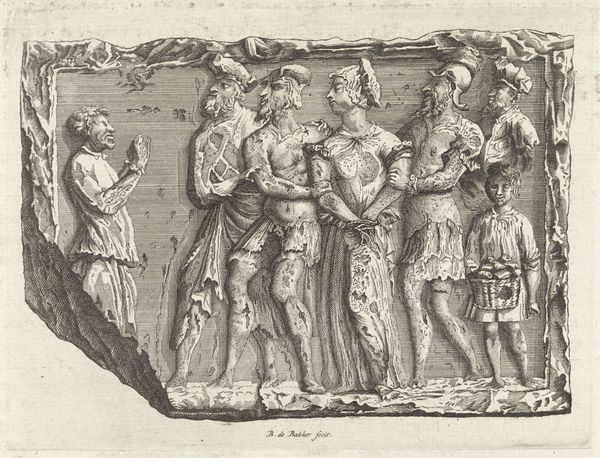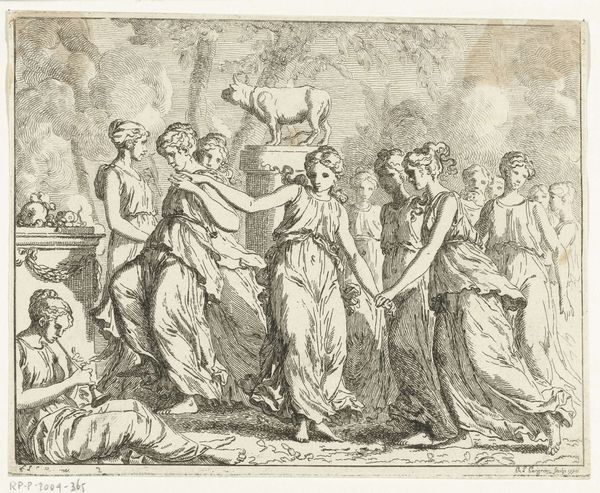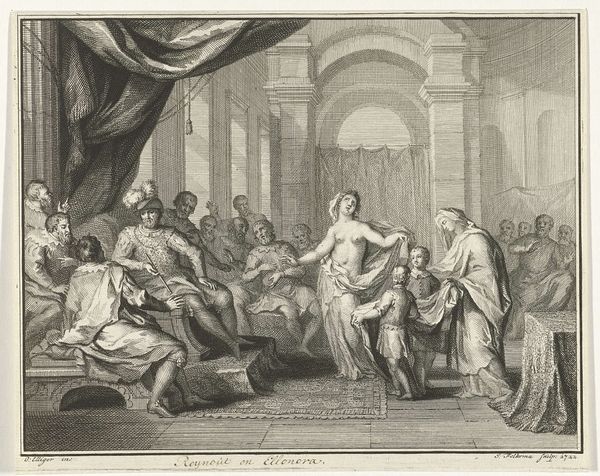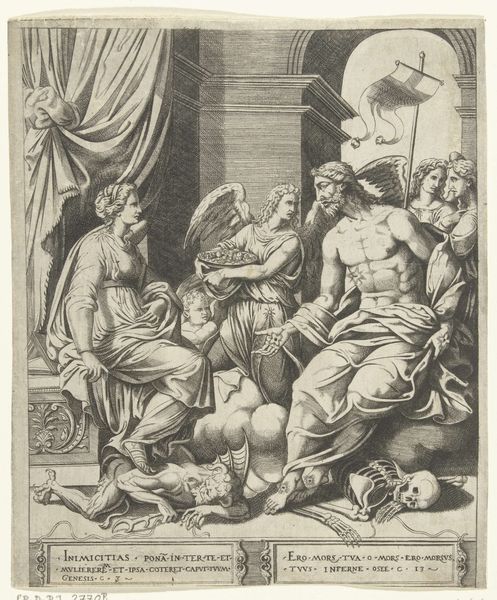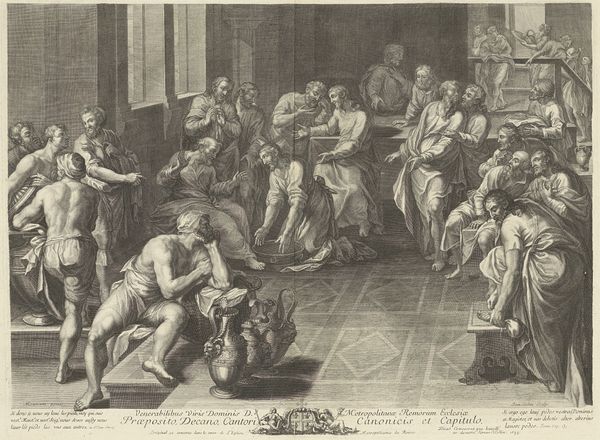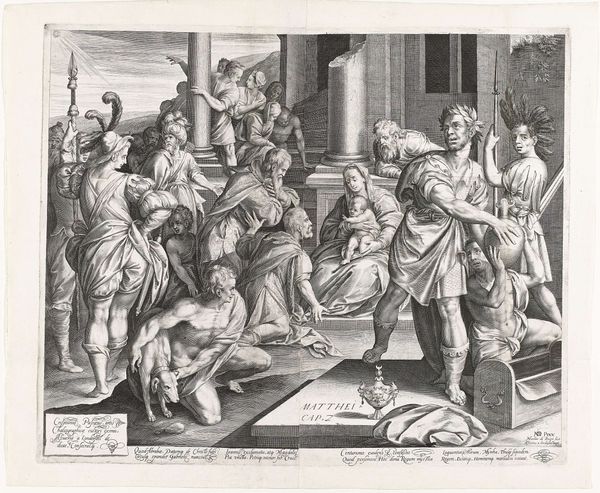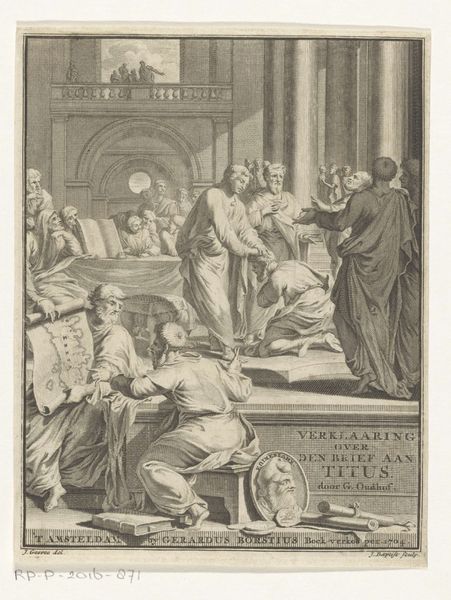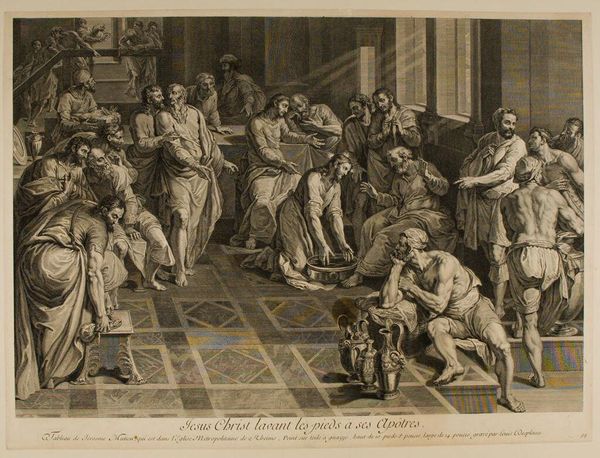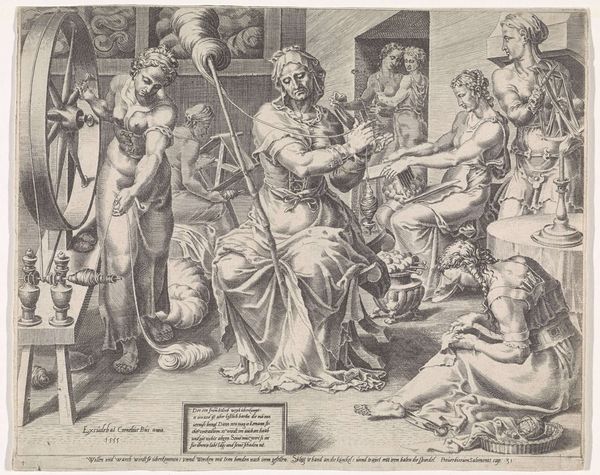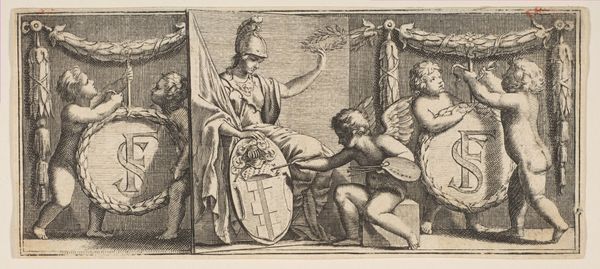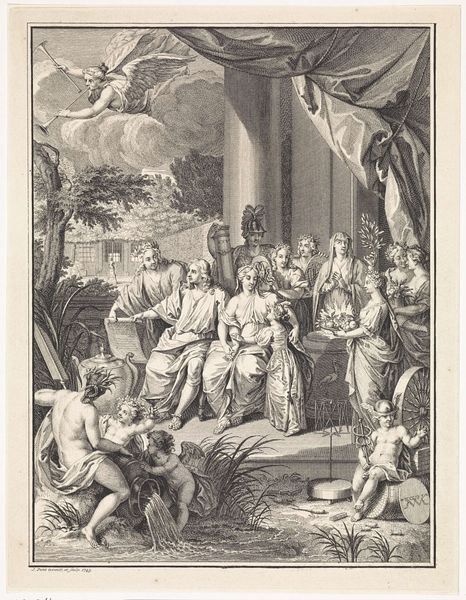
engraving
#
allegory
#
narrative-art
#
baroque
#
old engraving style
#
portrait reference
#
group-portraits
#
portrait drawing
#
history-painting
#
academic-art
#
nude
#
engraving
Dimensions: height 422 mm, width 570 mm
Copyright: Rijks Museum: Open Domain
Editor: Here we have "Apollo en zes muzen," or "Apollo and Six Muses," an engraving by Jan Edelinck from 1678. The detailed line work is incredible, creating a real sense of depth despite the monochrome palette. What really strikes me is the scene depicting such personal care – what is your read of it? Curator: From a materialist perspective, this piece speaks volumes about the intersection of artistic labor, class, and consumption in the Baroque era. Look at the very *act* of creating this print. The artist, Edelinck, a skilled craftsman, reproduces a scene likely commissioned by a wealthy patron, perpetuating a narrative of power and leisure. Editor: So the materials used and the process of creating the work reflect societal structures? Curator: Precisely. Engraving, a labor-intensive process, was itself a form of material capital. And consider what's being depicted: Apollo, the embodiment of high culture, being attended to by nymphs, highlighting a social hierarchy visualized through artistic labor. Editor: So the 'nymphs' labor, literally enacted in the image, connects to Edelinck's labor in creating it. What about the location; do we know where it was typically displayed or viewed? Curator: It was probably included in a book or as part of a series; it became part of domestic spaces or libraries, further displaying wealth and taste. The print is not just an artwork, it is also a *commodity,* participating in networks of exchange and consumption. How does that shift your interpretation? Editor: It completely changes the way I view it. Before, I was focused on the scene, now I understand it as a piece within a wider web of socio-economic relations. It’s all about how it was made and how it circulated! Curator: Exactly. It forces us to think critically about whose stories get told and by whom, all embedded within the materiality of the artwork itself.
Comments
No comments
Be the first to comment and join the conversation on the ultimate creative platform.
